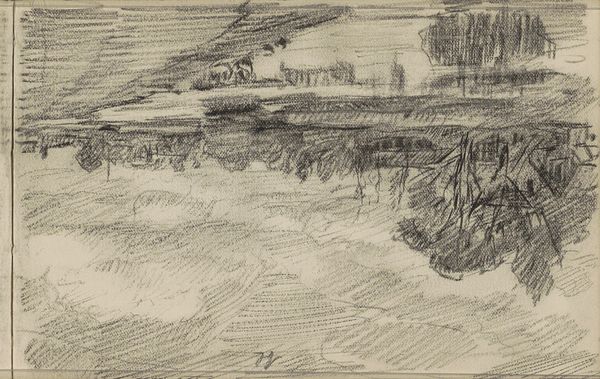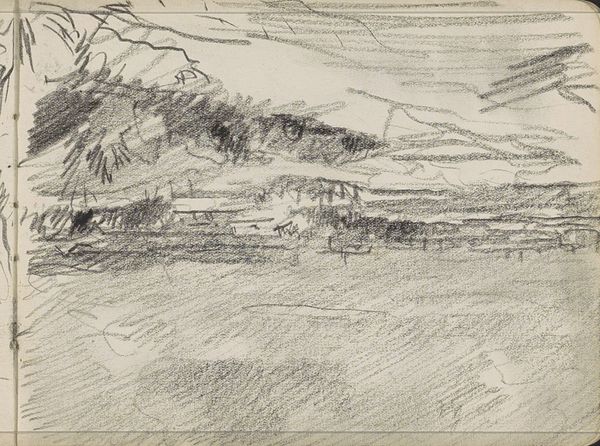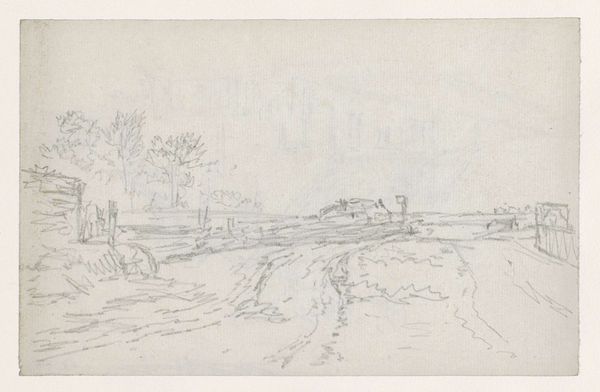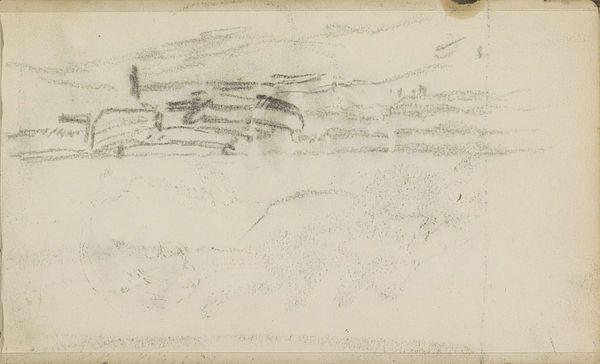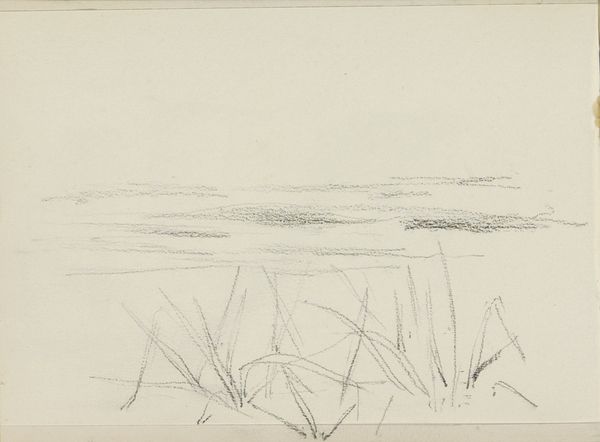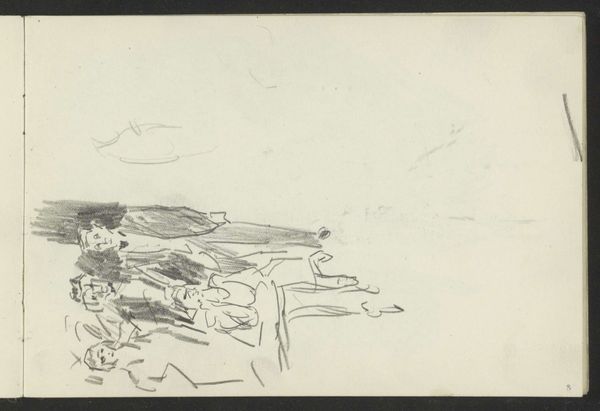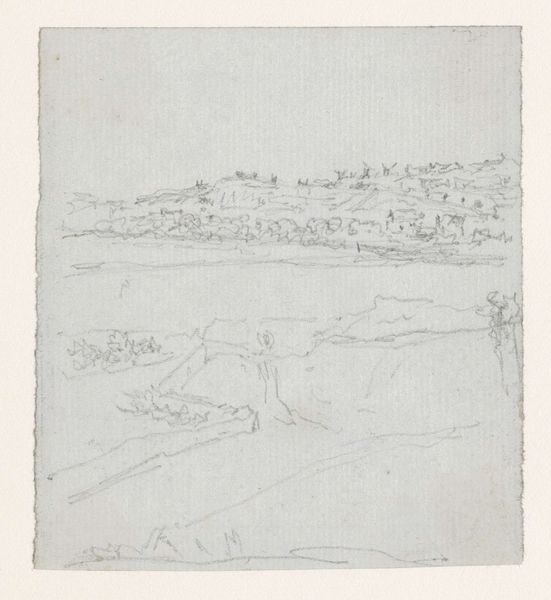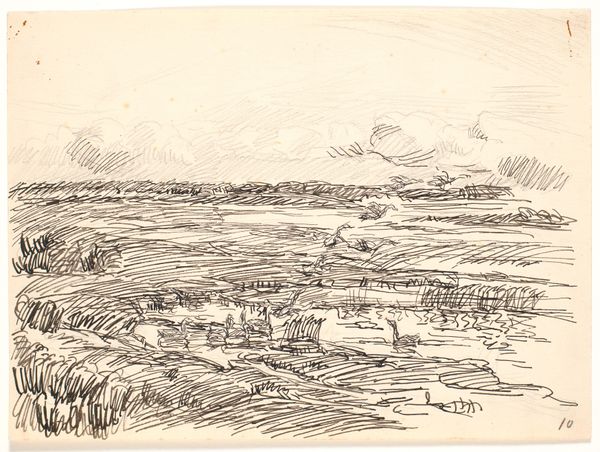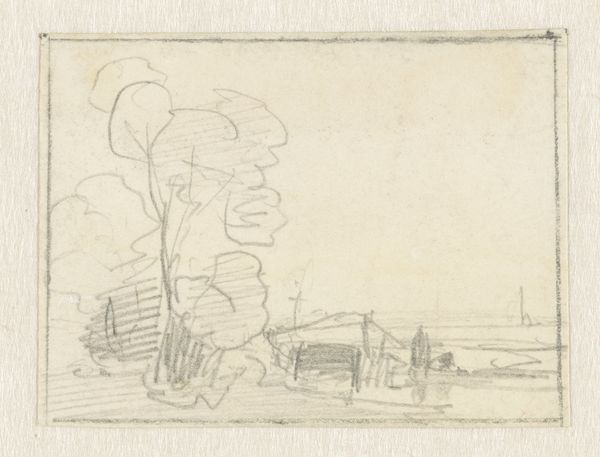
drawing, pencil
#
drawing
#
landscape
#
pencil
#
cityscape
#
realism
Dimensions: 180 mm (height) x 291 mm (width) (bladmaal)
Curator: This delicate pencil drawing is entitled "Udsigt mod Akropolis", or "View Towards the Acropolis," created in 1896 by the Danish artist Joakim Skovgaard. What are your initial thoughts? Editor: It's incredibly serene. The muted tones, achieved solely through pencil, create a sense of quiet contemplation. There’s a real contrast between the immediate foreground, quite detailed, and the softened, almost ethereal Acropolis in the distance. Curator: I'm drawn to that contrast as well. Skovgaard uses the varying pressure of the pencil to generate depth and texture. Note how the grass in the foreground is defined with confident, almost calligraphic lines, leading your eye to the monument in the background. Editor: Absolutely. The Acropolis itself is faint, dreamlike even, acting more as a symbol than a concrete depiction of the architectural site. It invites us to ponder the weight of history, and what it means for a nineteenth-century artist to confront such an icon. The entire Acropolis seems to be veiled by atmosphere and the weight of time. Curator: Indeed. Skovgaard's focus on realism is interesting when applied to something as heavily symbolic as the Acropolis. Perhaps his use of the cityscape acts as an invitation to viewers, an exercise in national pride and historical reverence, even at a distance. Editor: Or even a melancholic rumination on distance itself, wouldn't you agree? Note how he uses the wispy rendering to make the cultural touchstone recede, becoming almost a ghost in the landscape. Is it attainable? Has its moment passed? Curator: Interesting point. The choice of pencil allows for an expressiveness that’s both delicate and robust. There’s a tension there that reflects the complex relationship between the artist, the viewer, and the enduring power of a monument like the Acropolis. The artist uses the bare minimum to get us where we need to be. Editor: The landscape components function as both anchoring features and ephemeral brushstrokes, underscoring the monument's lasting impression within an evolving culture. I wonder what people back then read into such renderings of important places from an artist's rendering, now long since past. Curator: It’s interesting to consider the visual encoding here: that combination of realism and atmospheric perspective provides such lasting appeal even today. Editor: Yes, it allows for introspection that connects across generations.
Comments
No comments
Be the first to comment and join the conversation on the ultimate creative platform.
